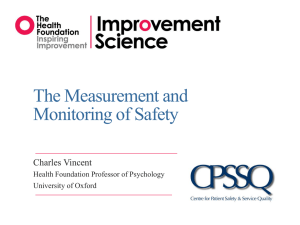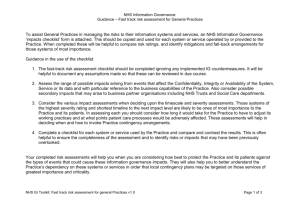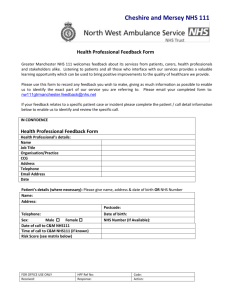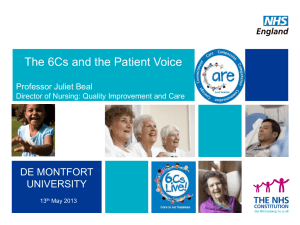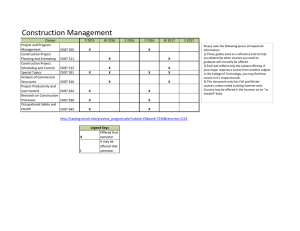Q Will Sign up for Safety replace risk management assessments?
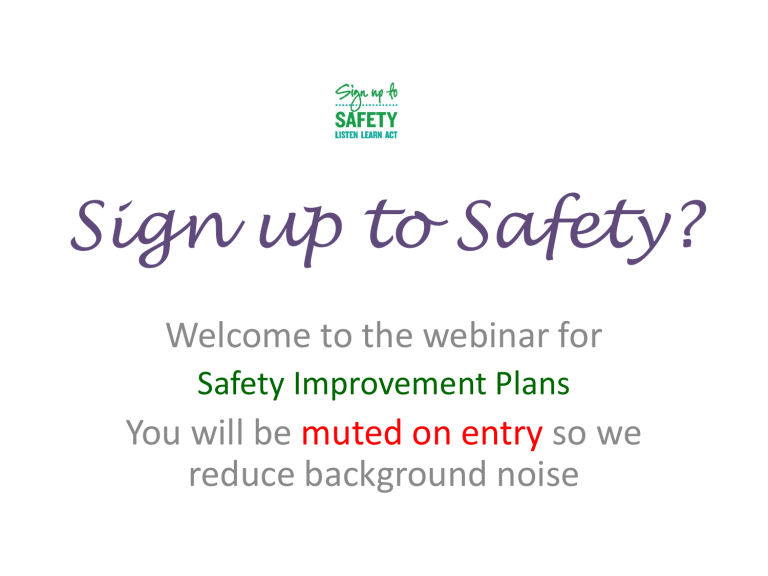
Sign up to Safety?
Welcome to the webinar for
Safety Improvement Plans
You will be muted on entry so we reduce background noise
How to be part of a webinar
•
Hands up
•
Chat room
•
Q&A
•
Polling
Where are you?
Our shared cause
Sign up to Safety
Reducing avoidable harm by 50% and saving
6000 lives
5 pledges
1 personal safety improvement plan
SIGN UP
1 safety lead and 1 campaign volunteer
Safety Improvement Plan
• Why do you need one?
• What is the link with the pledges?
• What is it?
• What will it be used for?
• What needs to be included?
• What are the deadlines?
We are developing an outcome based safety and learning service, to support our members in learning from claims.
last risk management assessment.
Incentives
• Supporting NHS LA member organisations to reduce harm and thereby reduce claims, through a one off, discretionary payment in 2015
• Could be up to 10% of a member’s CNST contribution
• Funding is to support the implementation of the safety improvement plan
Support
• NHS LA will provide information and analysis of your claims, together with expert support from one of our Safety and Learning Leads
• Incidents reported since April 2009 together with the specialty type and cost of these claims, (or anticipated cost of claims yet to be resolved)
• Starting point when considering areas which your organisation may wish to focus on
How to apply
• In your submission to Sign up to Safety, state whether you would like your safety improvement plan to be considered by the
NHS LA for funding of the work you have set out in your plan
• Plans to be robust and provide evidence of how higher volume and/or higher value claims will be reduced over time
Contributions
There will be additional financial benefit to your organisation if you are able to reduce the cost of claims over time as this will be reflected in your CNST contributions.
Contact us
If you would like the Safety and Learning Team to liaise with your safety lead, work through the themes and trends arising from your data and help your lead identify improvement solutions to support the goal, please ask your safety lead to contact the Safety and Learning Team via email: safetyandlearningenquiries@nhsla.com
Q Will Sign up for Safety replace risk management assessments?
• Sign up for Safety is a component of our safety and learning service which replaces assessments.
The last assessment was undertaken in March 2014. We have moved away from the standards and assessments to deliver an outcome based safety and learning service, reduce the burden on frontline staff and help to engage clinicians in learning from claims
Q What will happen to the Risk Management Discounts on contributions?
• We are aiming to move away from Risk Management Discounts but in doing so, will aim to avoid big swings in price for organisations. There are opportunities available to organisations in Sign up to
Safety in order to respond to the challenges presented by increasing claims
Q How is the one off incentive payment being funded?
• The incentive payment is being funded from a one-off allocation of funding from the Department of
Health
Q Can organisations invest the money over time?
• Foundation Trusts will be able to carry the money over however Non-FTs will need to spend the money within the financial year
Q When will we get the payment?
• If you are successful, we will notify your organisation of the amount of the payment by the end of the financial year and this will be deducted from your contribution for 2015/16
Q Are independent sector providers of NHS care eligible?
• No, as Sign up to Safety applies to the organisation rather than a particular service
Q Is it worth it for CCGs as they won’t get much, if anything?
• CCGs have a very specific role in Sign up to Safety and their pledges are slightly different, to support providers and the learning and to think about the drivers for change. There will be targeted and focused work with CCGs
Q Given rising claims volumes, is the price of CNST going up next year?
• There has been a significant rise in the number of claims, primarily as a result of changes to the legal environment although we are encouraging individual organisations to look at their claims. We are working closely with NHS England, Monitor, the NTDA and others to progress work on the price for CNST next year and will be in a position to share more information towards the end of this year
Aim / Outcome
XXX organisation will reduce avoidable harm in our targeted areas by 50% within 3 years
(Dec 2017/Jan
2018)
Primary Drivers
Capability
Leadership & culture
Measurement
Harm specific topics
Reduction in pt restraint
Self harm
Med errors
Record /handover errors etc
Secondary Drivers
Staff training – internal/external
Staff utilisation/application
Staff capacity & opportunity
AQuA & AHSN safety networks
Staff safety leads at all levels
Service users as safety leaders
Safety strategies & policies
Culture surveys & tools
Patient & staff experience
National & local data sources
Measurement plans
Training & education
Specialist training & knowledge
Planning & documentation
Risk assessments
Measurement of specific harm
Sign up to Safety
Via: http://www.england.nhs.uk/signuptosafety/about/
